ProTalk: David Bergman On Using Remote Cameras
As a traveling concert photographer, I often document tours with the same artist over a period of days, months, and even years. I’m currently on the road with Luke Combs and, while there are unexpected moments to capture every night, the concerts tend to have the same visual look to them.
Photographically, it would be easy to fall into a rut and make similar images at every show. To combat this, I regularly challenge myself to come up with new ways to shoot the shows. One way I do that, is by using remote cameras.
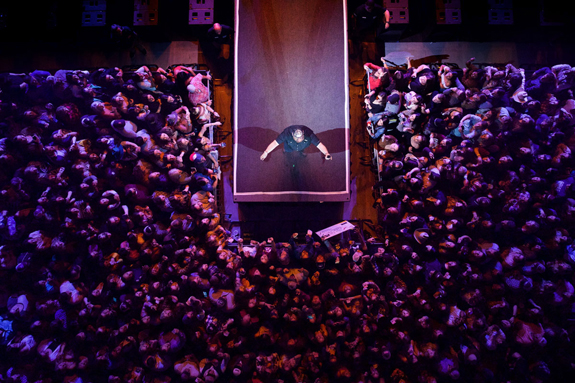
Luke Combs is photographed using an overhead remote during his show in Lubbock, TX on December 6, 2019. Image © David Bergman.
Throughout my career, I’ve also covered a lot of sporting events and was a contributing photographer for Sports Illustrated magazine. Remotes are common in sports photography, so when I started touring, I brought that technology into the concert arena.
A remote is simply another camera and lens that you set up and trigger remotely – usually in addition to the other camera(s) you’re holding. There are two main reasons to use remotes. The first is that you can make images from places that a photographer wouldn’t normally be allowed.
For example, you often see photos from above the rim at a basketball game or inside the net at a hockey match. Obviously, it’s wouldn’t be possible or practical to put a person there, but a small camera can be mounted (with permission!) and then triggered remotely by the photographer when they want to take pictures.
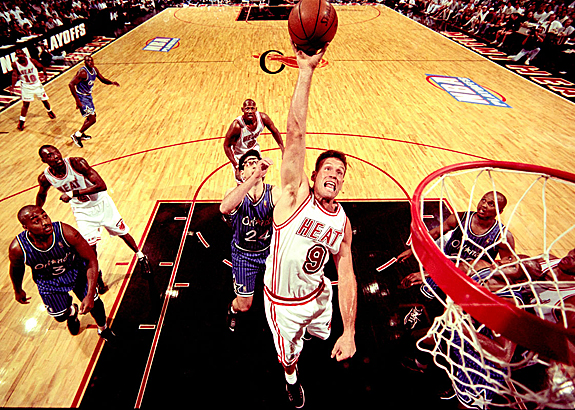
Caption: Miami Heat player Dan Majerle is photographed using a backboard remote during a playoff game against the Orlando Magic in Miami, Florida in April 27, 1997. Image © David Bergman.
Another reason to use remotes is to be able to trigger multiple cameras at the same time. They can be set up so when the photographer takes a picture, all the cameras fire at the same time.
This can be beneficial at a big event when you want to have every angle covered, or even when you don’t know exactly where the best moment will take place. Multiple remotes give you coverage from many different angles.
Photographing sports and concerts isn’t really that different. On tour, I try to put remotes in a slightly different place each night. My favorite location is in the drum kit or underneath the drum riser with a wide angle lens.
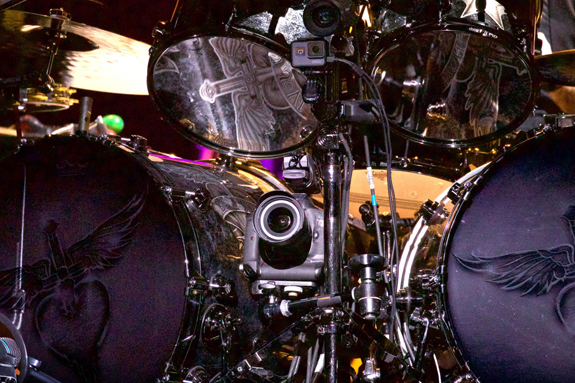
A Canon 1DX Mark II camera body and 24-70 2.8 lens is placed in Bon Jovi drummer Tico Torres’ drum kit during the band’s show in Columbus, OH on March 18, 2017. Image © David Bergman.
As the tour photographer, I’m able to stand on the stage during the show . However, I don’t want to be a distraction to the artist or the fans. Having a remote camera up there all night allows me to get pictures at anytime throughout the show. Also, people tend to act differently if they see a photographer standing in front of them, while they often forget about a remote camera.
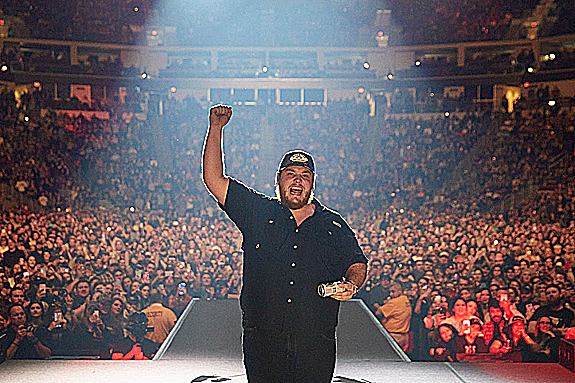
Luke Combs is photographed using a stage remote during his concert in Hershey, PA on February 21, 2019. Image © David Bergman.
To set up a remote, you need a way to mount the camera and a way to trigger it from a distance. For mounting, I’ve used the Manfrotto super clamp and magic arm conbination, which allows me to attach the camera to something sturdy like a mic stand, and then position it where I want. If there’s room on the riser itself, I’ll use a Platypod floor plate with a ballhead on it and simply place the camera on top.

A stage remote is placed on a Platypod floor plate during a Luke Combs show in Fresno, CA on October 25, 2019. Image © David Bergman.
I’ve also put cameras in the tour’s lighting trusses overhead, and even used a 20-foot high tripod to get angles that wouldn’t be possible any other way.
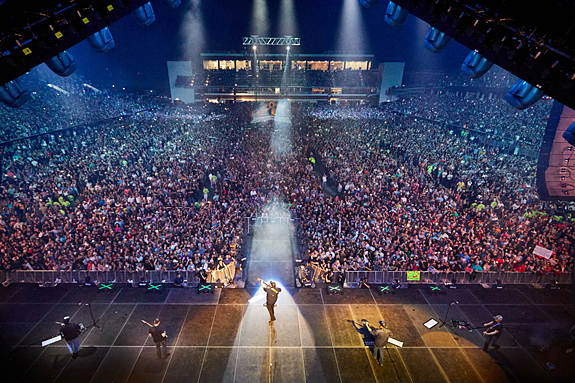
Luke Combs is photographed from a remote camera in a lighting truss during his show in Boone, NC on September 4, 2021. Image © David Bergman.
To trigger my cameras, I exclusively use Pocket Wizard transceivers. They work over radio waves and have incredible distance. I’ve fired remotes during a show from a football field away using the Wizard’s “long range” mode. I set my exposure in full manual mode and guess my settings based on many years of experience.
Of course, I’m shooting RAW, so I’ve got a little bit of latitude if needed. I also use autofocus, and have found that the newest cameras like the Canon R5 are perfect for remotes. The R5 AF has full coverage of the entire frame, and the eye/head/face/body detection picks up my subject almost every time.
At the end of the day, remote camera are hit and miss. There are a lot of things that can go wrong and you never really know what you are going to get. But I shoot thousands of frames every show, and with lots of practice, I’ve found that I come away with unique images that I wouldn’t have be able to get otherwise.
ABOUT THE AUTHOR:
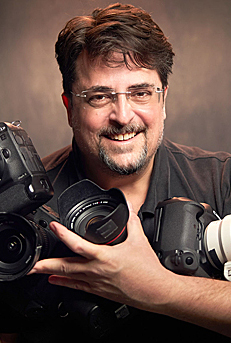
David Bergman is a New York based Canon Explorer of Light and Red River Paper Pro who specializes in action, music and portraiture.
As the official tour photographer for Luke Combs and Bon Jovi, he has documented bands on stage and on the road in more than 30 countries and shares his experience with photographers of all skill levels at his unique “Shoot From The Pit” live concert photography workshops.
With 13 Sports Illustrated covers to his credit he has photographed numerous Olympics, World Series, Super Bowls, NBA, and NCAA Championships. He is an engaging and passionate public speaker and hosts the weekly web series, “Ask David Bergman” on the Adorama YouTube channel.
TECH RESOURCES:
Platypod floor plate with a ballhead
LINKS TO DAVID BERGMAN:
Workshops: www.ShootFromThePit.com
Portfolio: www.DavidBergman.net
Instagram: www.Instagram.com/davidbergman
Ask David Bergman: askdavidbergman.com
BERGMAN ON RED RIVER PAPER:
“I love Aurora Natural 285 for my black and white images. It easily handles the gradients while holding detail from the digital grain. There is absolutely no surface reflection and the paper has a slight texture, which gives the image a subtle three dimensional effect.”
Original Publication Date: April 16, 2023
Article Last updated: September 14, 2023
Related Posts and Information
Categories
About Photographers
Announcements
Back to Basics
Books and Videos
Cards and Calendars
Commentary
Contests
Displaying Images
Editing for Print
Events
Favorite Photo Locations
Featured Software
Free Stuff
Handy Hardware
How-To-Do-It
Imaging
Inks and Papers
Marketing Images
Monitors
Odds and Ends
Photo Gear and Services
Photo History
Photography
Printer Reviews
Printing
Printing Project Ideas
Red River Paper
Red River Paper Pro
RRP Products
Scanners and Scanning
Success on Paper
Techniques
Techniques
Tips and Tricks
Webinars
Words from the Web
Workshops and Exhibits
all
Archives
January, 2025
December, 2024
November, 2024
October, 2024
September, 2024
August, 2024
July, 2024
June, 2024
May, 2024
more archive dates
archive article list




